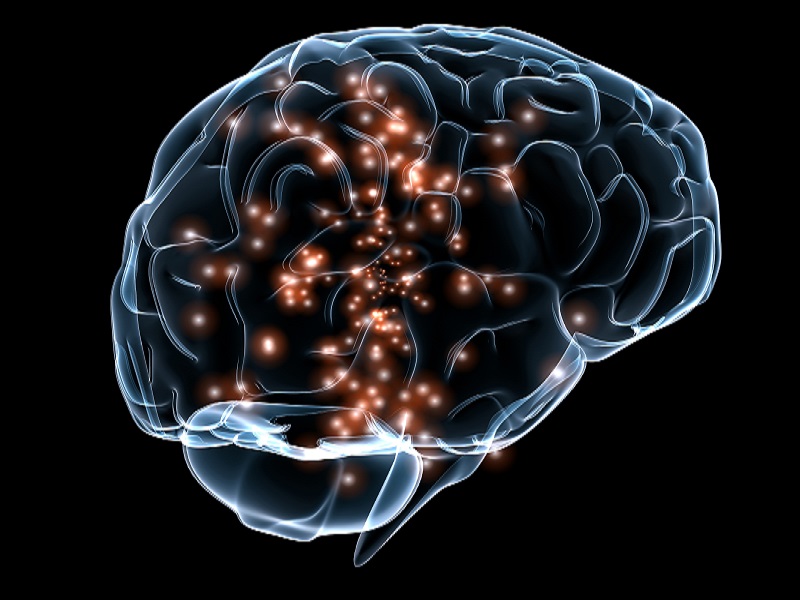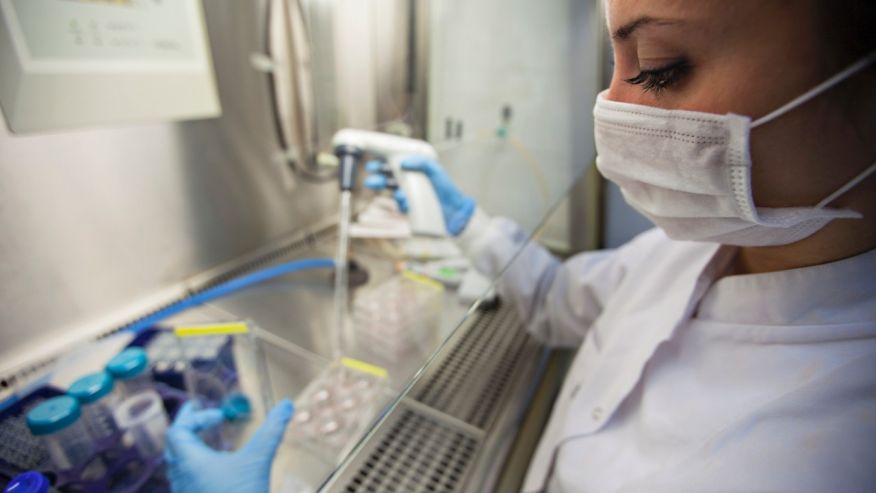As Susan sits chatting to a nurse in a London clinic, a light tapping sound by her head signals that parts of her brain are being zapped by thousands of tiny electro-magnetic pulses from a machine plugged into the wall.
The 50 year-old doctor is among growing ranks of people with so-called treatment-resistant depression, and after 21 years fighting a disorder that destroyed her ability to work and at times made her want to “opt out of life”, this is a last resort.
Until recently, Susan and others like her had effectively reached the end of the road with depression treatments, having tied the best drugs medical science had to offer, engaged in hours of therapy, and tried cocktails of both.
But a renaissance in research into depression prompted by some remarkable results with highly experimental treatments has changed the way neuroscientists see the disorder and is offering hope for patients who had feared there was nowhere left to go.
Their drive to find an answer has taken neuroscientists to uncharted waters – researching everything from psychedelic magic mushrooms, to the veterinary tranquilizer ketamine, to magnetic stimulation through the skull, to using electrical implants – a bit like a pacemaker for the brain – to try and reset this complex organ’s wiring and engender a more positive outlook.
Their sometimes surprising findings have in turn taught them more about depression – leading to a view of it not as a single mental illness but a range of disorders each with distinct mechanisms, yet all producing similarly debilitating symptoms.
“The thinking about depression has been revitalized,” said Helen Mayberg, a neurologist at Emory University in Atlanta in the United States.
“We have a new model for thinking about psychiatric diseases not just as chemical imbalance – that your brain is a just big vat of soup where you can just add a chemical and stir – but where we ask different questions – what’s wrong with brain chemistry and what’s wrong with brain circuits.”
Add a chemical and stir?
There’s little doubt that until this new breath of hope, depression had been going through a bad patch.
Affecting more than 350 million people, depression is ranked by the World Health Organization as the leading cause of disability worldwide. In extreme cases, depressed people kill themselves. Around a million people commit suicide every year, the majority due to unidentified or untreated depression.
Treatment for depression involves either medication or psychotherapy – and often a combination of both. Yet as things stand, as many as half of patients fail to recover on their first medication, and around a third find no lasting benefit from any medication or talking therapy currently available.
High hopes for “wonder” drugs like Prozac, Seroxat and others in their class of selective serotonin reuptake inhibitors (SSRIs) in the 1980s and 1990s were dimmed by studies in the 2000s that showed they helped a proportion of people, but left at least 30 percent of patients little or no better than before.
And as chronically depressed patients move from trying one drug to the next, or one type of therapy to another, their hopes too dim as it becomes clear that failing to get better with each depressive bout in turn also ups their chances of relapse.
For Susan, the battle seemed never ending.
When she was at her lowest, she dreaded each day, says she was “frightened of everything” and overwhelmed even by straightforward tasks like making a meal for her two children.
“I was taking double doses of antidepressants – two types at once – and because I was also very agitated I was on (the sedative) chloral hydrate to help me sleep,” she told Reuters.
“So I was on this massive amount of medication, but with no effect whatsoever on my depression. Nothing was working.”
Desperate to help patients like Susan, and alarmed by news of some pharmaceutical firms such as GlaxoSmithKline abandoning research and development in depression because it was proving too hard to find new drugs that could turn a profit, doctors began looking for new approaches.
“We often encounter patients who say ‘I’ve tried a million things and nothing seems to be working’,” said Rafael Euba, a consultant psychiatrist at the London Psychiatry Centre (LPC) where Susan was treated. “We want to instill a feeling of hope.”
Electro-therapy
In Susan’s case, past experience with a controversial electrical intervention – electro convulsion therapy (ECT) – which she says was what eventually clawed her back from her severe depression 17 years ago, lead her to investigate the latest in electrical treatments – so-called repetitive transcranial magnetic stimulation, or rTMS
Approved by medicines regulators in the United States and in Europe it is a painless treatment that uses electro-magnetic induction to activate an area of the brain that psychiatrists know is involved in the regulation of mood.
Unlike ECT, which gained notoriety in the 1975 American drama film One Flew Over the Cuckoo’s Nest, rTMS it does not induce “shock”, but is far more targeted, delivering a pulse to neurons in the brain and that makes them fire again.
At the LPC – currently the only place in Britain where patients can get rTMS – a treatment course can be anything from 3 to 6 weeks of half an hour a day, five days a week.
It isn’t cheap. The treatment costs $2,300 per week, with the average course lasting four weeks. And some patients also need weekly or fortnightly “maintenance” sessions beyond that.
Patients put on a white fabric cap and the electro-magnetic coil is positioned over the part of the brain that needs help – normally the left dorso-lateral prefrontal cortex, which is a few inches above the temple beneath the skull.
“Unlike with other psychiatric treatments, patients tend to find this experience quite pleasant,” said Euba. “All you get is a slight tingling on the scalp – and some people like that because it’s a physical sensation that something is happening.”
Although they are from a controlled trial and show only a snapshot of the couple of dozen patients treated and monitored at one clinic, Euba’s results so far have been striking.
Of 24 patients with depression ranging from mild to severe who received rTMS at the LPC, 18 of them – or 75 percent – got completely well and were classed as being in remission. Two more responded to treatment but did not get completely well, and only four – 17 percent – did not respond.
Deep brain stimulation
Mayberg and her colleagues in the United States had also been intrigued by the potential for electrical stimulation to ease severe depression, but they went in deeper.
After the success of using deep brain stimulation (DBS) devices made by firms such as Medtronic to treat tremors in patients with Parkinson’s disease, her team conducted a trial using them in a small number of patients who’d had depression for decades and had not been helped by numerous different drugs.
Electrical stimulation devices were implanted into the brains of patients with severe depression and bipolar disorder.
“In this treatment the stimulation continues all the time – they implant the “pacemaker” and leave it switched on for years – and only sometimes they have to change the battery,” said Jonathan Roiser, a reader in cognitive neuroscience at University College London.
According to study results published in the Archives of General Psychiatry journal last year, the number of patients who had responded to treatment after two years was very high – at 92 percent – and the proportion who were completely well and in remission from their depression was 58 percent.
For psychiatrists more used to seeing patients fail again and again to get better on any kind of treatment, these results were unheard-of. “It was a remarkable finding,” says Roiser.
Yet it’s not just the brain’s wiring that is getting more attention. Chemistry, too has thrown up some exciting results.
Researchers who looked, for example, at the veterinary tranquilizer ketamine – or “Special K” as it is called as a party drug – found that in some patients with depression it dramatically reduced their symptoms, sometimes within hours – and kept their mood stable for several weeks after treatment.
Inspired by these uplifting findings, several drug firms, including Roche, AstraZeneca and Johnson & Johnson’s Janssen unit, are in the early or mid stages of developing ketamine derivatives into what they hope will become successful new antidepressants.
Define subtypes and treat accordingly
Experts say the success these new and some still experimental treatments for depression emphasizes the re-thinking of it as not one but a cluster of disorders.
“We now have this increasingly influential model of what is causing mental health problems like depression – one focused on the brain circuits,” said Roiser.
“We’ve learnt a lot about how these circuits operate, what kind of cognitive tasks they are involved in, how they interact and how they are connected to each other.”
More evidence of this came in a recent study in the Journal of the American Medical Association in which researchers found that brain scans of depressed patients could help predict whether they would be more likely to respond to treatment with anti-depressant drugs or with psychotherapy.
The study focused on a part of the brain known as the insula, which plays a role in influencing emotions.
It found that in patients whose scans showed their insula consumed an excess of glucose, psychotherapy was more likely to help. In patients whose insula were less active, consuming less glucose, antidepressants were more successful.
“Our gut tells us there are subtypes (of depression), and this shows that if you look the brain, you should define the biology and treat accordingly – just as we do in other branches of medicine (like cancer or diabetes),” said Mayberg.
Far from being defeated by the emergence of depression as a more complex a disorder than first assumed, scientists say the renaissance in research is based in confidence that deeper knowledge will ensure new and better treatments can be found.
Roiser confesses to feeling “extremely excited and optimistic” about the future of treating mental illnesses.
“We’re in a movement away from the traditional psychological and biological explanations for depression – which look increasingly outdated and simplistic – and we’re in the middle of specifying these disorders in terms of their underlying brain circuits,” he said. “That’s a much better position than we were in 20 years ago.”
Adults making up to 138 percent of the federal poverty level () will be able to sign up for Medicaid, under an expansion paid for entirely by the federal government between 2014 and 2017.










